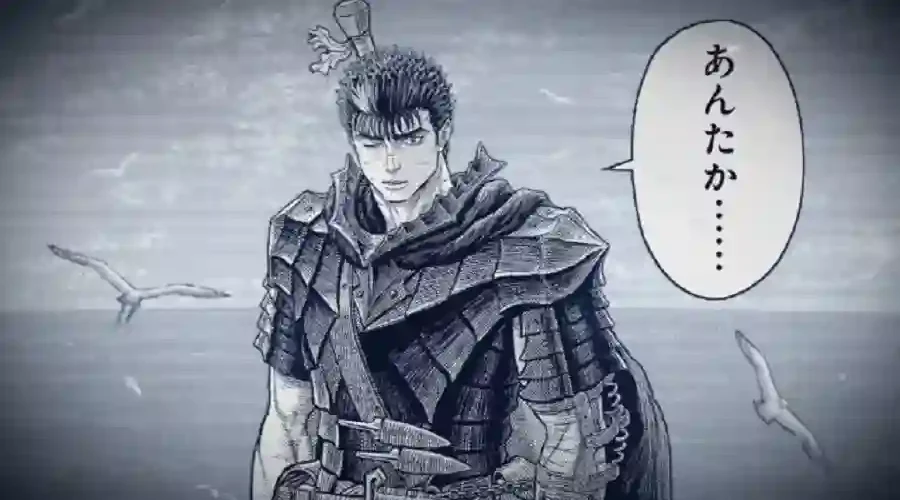The world of manga lost a visionary creator in May 2021 when Kentaro Miura, the mastermind behind the dark fantasy epic “Berserk,” passed away at the age of 54. Miura’s sudden departure left fans and the manga community in mourning, but it also left behind a profound legacy that continues to shape the industry and inspire creators worldwide. In this article, we will delve into the impact of Kentaro Miura’s groundbreaking work, “Berserk,” exploring its influence on manga, anime, and pop culture.
A Dark Fantasy Revolution
“Berserk” made its debut in 1989 in the pages of “Monthly Animal House” magazine, and from the very beginning, it was clear that Miura was embarking on a dark and ambitious journey unlike anything seen before in manga. The story followed the life of Guts, a brooding and relentless mercenary whose tragic past and insatiable thirst for revenge set the tone for the entire series.
What set “Berserk” apart was its fearless exploration of dark themes, intricate world-building, and complex characters. Miura’s dedication to crafting a rich and atmospheric universe filled with supernatural elements, treacherous landscapes, and political intrigue elevated the series to a level of storytelling rarely achieved in the medium. “Berserk” was more than just a manga; it was a masterclass in dark fantasy.
Complex Characters and Relationships
At the heart of “Berserk” were its deeply flawed and multifaceted characters. Guts, the series’ protagonist, was a prime example of Miura’s talent for character development. His journey from a traumatized and vengeful warrior to a complex and introspective figure resonated with readers on a profound level. Guts’ relentless pursuit of vengeance and his inner struggles made him a relatable and compelling character.
Griffith, the enigmatic leader of the Band of the Hawk, provided a stark contrast to Guts. His charisma, ambition, and enigmatic qualities made him a character who constantly kept readers guessing. The complex relationship between Guts and Griffith, characterized by friendship, rivalry, and obsession, served as the emotional core of the series, driving the narrative forward and captivating audiences.
Themes of Darkness and Humanity
“Berserk” delved deep into the darkest corners of the human psyche, tackling themes such as trauma, revenge, the corrupting influence of power, and the consequences of one’s choices. Miura’s storytelling was unflinching in its examination of these themes, pushing the boundaries of what was morally acceptable within the medium.
The theme of trauma was central to the character arcs of both Guts and Griffith. Guts, having endured immense suffering throughout his life, grappled with the scars of his past and the overwhelming desire for revenge. Griffith, on the other hand, was willing to sacrifice anything, including the lives of his closest comrades, to achieve his dream of creating his own kingdom. Miura’s exploration of the psychological toll of trauma and the lengths individuals would go to cope with it added layers of depth to the narrative.
The series also explored the corrupting influence of power and ambition. Griffith’s ascent to power and his willingness to sacrifice his humanity for his dream raised profound questions about the cost of achieving one’s goals. “Berserk” forced readers to confront uncomfortable truths about the allure of power and the sacrifices people were willing to make to attain it.
Artistry: A Visual Masterpiece
Kentaro Miura’s artwork in “Berserk” was nothing short of breathtaking. His meticulous attention to detail, whether in character design, architecture, or landscapes, brought the dark fantasy world to life in vivid and haunting ways. From epic battles to intimate character moments, every panel was a testament to Miura’s artistic prowess and his ability to immerse readers in the story’s atmosphere.
One of Miura’s greatest strengths was his ability to convey emotion through his artwork. The characters’ facial expressions, body language, and the subtleties of their interactions effectively communicated their inner turmoil and conflict, adding depth to their development. The grotesque and terrifying creatures that inhabited the world of “Berserk” were rendered with such precision and imagination that they became hauntingly real.
Legacy and Influence
Kentaro Miura’s legacy extends far beyond the pages of “Berserk.” The impact of his work on the manga and anime industry is immeasurable. “Berserk” has inspired countless creators and served as a touchstone for dark fantasy storytelling. Its influence can be seen in various manga, anime, and video games that have drawn inspiration from its themes and aesthetic.
The enduring popularity of “Berserk” is a testament to its timeless storytelling and the emotional connection it forged with its audience. Miura’s passing was met with an outpouring of grief and appreciation from fans worldwide, highlighting the profound impact his creation had on the manga and anime community.
Adaptations and Spin-offs
“Berserk” received several adaptations and spin-offs over the years, further cementing its status as a cultural phenomenon. The 1997 anime adaptation introduced a new audience to the world of “Berserk,” albeit with some differences from the manga. In 2012, a film trilogy was released, covering the Golden Age Arc of the story. While these adaptations brought “Berserk” to a wider audience, they only scratched the surface of the source material’s depth and complexity.
In addition to the adaptations, “Berserk” also spawned video games, artbooks, and merchandise, all contributing to its enduring popularity.
Conclusion
Kentaro Miura’s “Berserk” is a dark fantasy masterpiece that will forever be remembered for its groundbreaking storytelling, complex characters, and stunning artwork. Miura’s dedication to crafting a rich and immersive world, coupled with his fearless exploration of the darkest aspects of humanity, has left an indelible mark on the world of manga and beyond.
While Miura may have left this world prematurely, his legacy lives on through the pages of “Berserk” and the hearts of its devoted fans. The impact of his work on the manga and anime industry is undeniable, and his creation continues to inspire and captivate new generations of readers and creators. Kentaro Miura’s legacy is not just the legacy of a talented artist; it is the legacy of a visionary who pushed the boundaries of storytelling and enriched the world of manga with a masterpiece that will stand the test of time.





